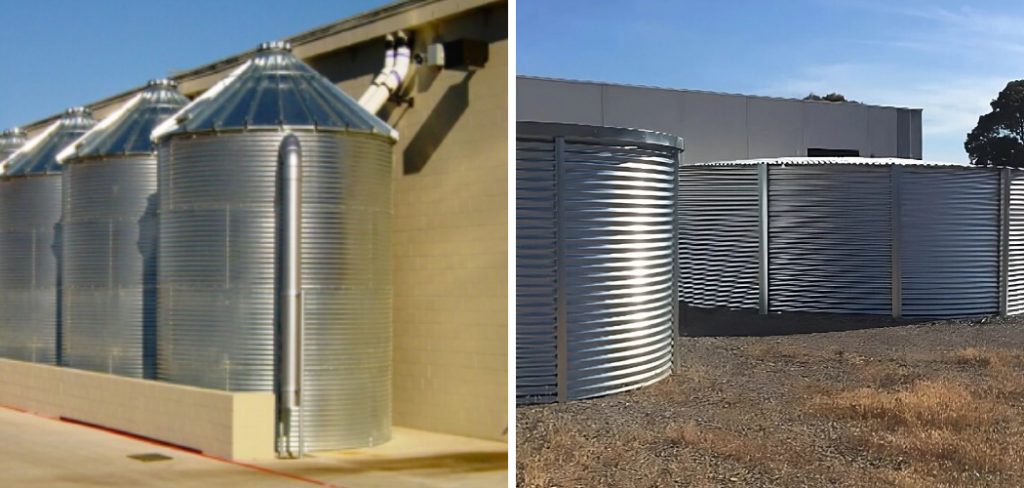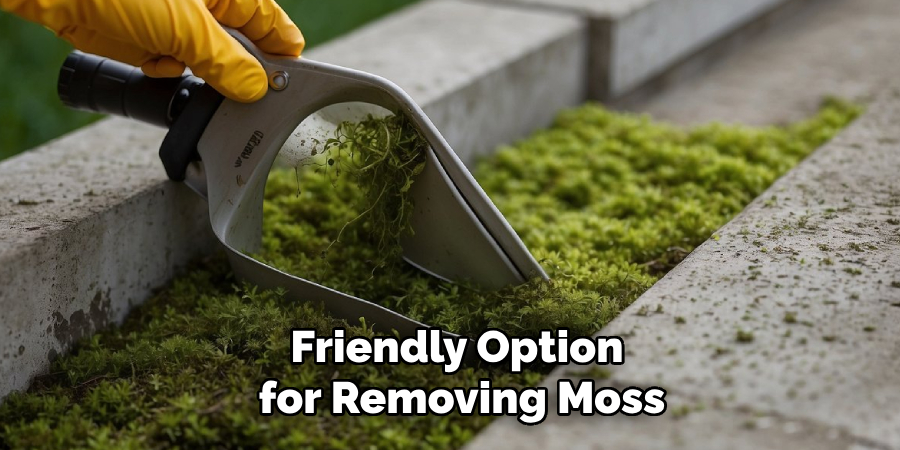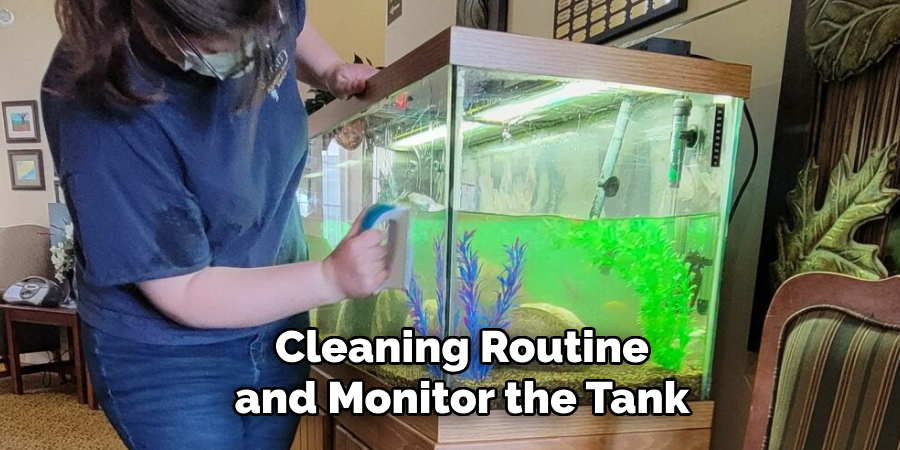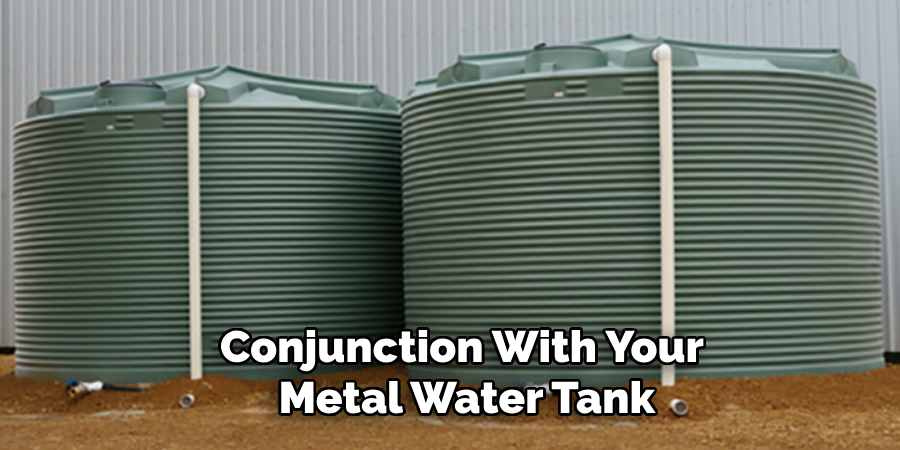Moss growth on metal water tanks can become a significant maintenance issue, leading to potential corrosion, compromised water quality, and structural damage if not addressed promptly. Metal surfaces are particularly susceptible to moss due to moisture retention and shaded environments. Regular removal of moss not only preserves the integrity of the tank but also ensures that the stored water remains clean and safe for use. In this guide, we will explore effective methods and preventive measures for how to remove moss from metal water tank.

Buildup on Metal Water Tanks and Its Common Causes
The buildup of moss and other organic materials on metal water tanks is primarily caused by environmental factors that promote the growth of such organisms. Shaded areas, particularly those located near trees or tall structures, are more prone to retaining moisture, creating an ideal environment for moss to thrive. Additionally, regions with high humidity levels or frequent rainfall can exacerbate this issue, as the consistent presence of moisture allows moss to establish more swiftly. The surface texture of metal tanks can also play a role, where rough or inadequately treated surfaces might offer moss spores easier adherence.
Over time, the lack of regular cleaning and maintenance will allow these conditions to foster increased buildup, leading to more substantial problems if not addressed.
Causes of Moss Growth on Metal Water Tanks
Moss growth on metal water tanks can be attributed to several interrelated factors. Primarily, environmental conditions such as consistent shade, high humidity, and frequent rainfall create an optimal scenario for moss to flourish. Tanks situated near tall vegetation or structures often remain in shade, trapping moisture on the metal surface and inhibiting evaporation. The material properties of the tank, including surface texture and treatment, significantly influence moss adherence. Tanks with rough or untreated surfaces present more opportunities for moss spores to latch onto.
Furthermore, metal inherently retains heat, which can lead to condensation that provides additional moisture to support moss growth. Lack of routine maintenance compounds these issues, as tanks are left to battle these naturally conducive conditions without intervention. Understanding these causes is crucial for implementing effective prevention strategies to protect metal water tanks from moss proliferation.
Tools and Materials Needed
To effectively remove moss from a metal water tank, several tools and materials are essential for the task. Begin with a sturdy ladder to safely access all areas of the tank, ensuring stability and safety while working at heights. A medium-bristled brush or scrubbing pad will be necessary to physically dislodge the moss from the tank’s surface without causing damage to the metal. For chemical removal, a suitable moss-killing solution, such as a diluted bleach mixture or a commercial moss remover, should be prepared. Personal protective equipment, including gloves, eye protection, and a mask, is vital to protect against any chemicals used in the cleaning process.

10 Methods How to Remove Moss from Metal Water Tank
1. Inspect the Tank and Assess the Severity of Moss Growth
Begin by thoroughly inspecting the metal water tank to determine the extent of moss coverage. Check for areas where the moss is most concentrated and look for signs of rust or structural damage. This initial assessment helps you decide the best methods to use and ensures you address any underlying issues that could contribute to moss regrowth. By understanding the scope of the problem, you can plan an effective cleaning strategy.
2. Brush Off Loose Moss with a Stiff-Bristle Brush
For light moss growth, a stiff-bristle brush is often sufficient to remove it. Start by gently scrubbing the moss-covered areas, working in circular motions to loosen the moss from the metal surface. Avoid using wire brushes, as they can scratch the metal and strip protective coatings. Collect the dislodged moss in a bag to prevent it from spreading to nearby surfaces. This method is simple and effective for surface-level moss.
3. Use a Pressure Washer for Heavy Moss Accumulation
A pressure washer can quickly and efficiently remove large amounts of moss from a metal water tank. Set the washer to a moderate pressure setting to avoid damaging the metal. Direct the spray at an angle to lift the moss without forcing water into seams or crevices. For stubborn areas, use a narrow nozzle attachment. After washing, allow the tank to dry completely to prevent moisture from encouraging regrowth.
4. Apply a Commercial Moss Killer
Commercial moss-killing solutions are specifically designed to penetrate and eliminate moss effectively. Choose a moss killer that is safe for use on metal surfaces and apply it according to the manufacturer’s instructions. Spray or brush the solution onto the affected areas and let it sit for the recommended time. The chemical treatment will kill moss at the root, making it easier to remove and preventing regrowth.
5. Make a Homemade Vinegar Solution
For an eco-friendly alternative to commercial products, create a solution using white vinegar and water. Mix equal parts of vinegar and water in a spray bottle and apply it generously to the moss-covered areas. Let the solution sit for 15-20 minutes to weaken the moss. Scrub the treated areas with a soft brush, then rinse with water. Vinegar is a natural moss inhibitor and works well for light to moderate moss growth.
6. Use Baking Soda for a Gentle Cleaning Approach
Baking soda is another environmentally friendly option for removing moss. Sprinkle a generous amount of baking soda over the mossy areas and lightly spray with water to activate it. Let it sit for a few hours or overnight. The alkaline properties of baking soda will kill moss and loosen its grip on the metal. Scrub with a brush and rinse thoroughly to reveal a clean surface.
7. Remove Moss with Bleach for Persistent Growth
For severe moss infestations, bleach can be an effective solution. Mix one part bleach with three parts water in a spray bottle and apply it to the moss. Allow the bleach to sit for 10-15 minutes, then scrub with a brush. Rinse the area thoroughly with water to remove any bleach residue. Use caution with this method, as bleach can harm nearby plants and corrode uncoated metal if not rinsed properly.

8. Treat the Tank with a Steam Cleaner
Steam cleaning is an excellent method for removing moss without using chemicals. The high temperature of the steam kills moss spores and loosens moss from the metal surface. Use a steam cleaner with a suitable attachment to target moss-covered areas. This method is particularly useful for tanks with intricate designs or hard-to-reach areas, as it penetrates crevices without damaging the metal.
9. Prevent Regrowth with a Protective Coating
After removing the moss, apply a protective coating to the tank to prevent future growth. Anti-moss or anti-rust coatings are specifically designed to shield metal surfaces from moisture and moss spores. Clean and dry the tank thoroughly before applying the coating. This step not only prevents regrowth but also enhances the durability and lifespan of the water tank.
10. Maintain Regular Cleaning and Monitoring
The best way to keep moss from returning is to establish a regular cleaning routine and monitor the tank for early signs of growth. Clean the tank every few months with a mild detergent and water to remove dirt and organic matter that can promote moss. Trim nearby vegetation to improve sunlight exposure and airflow, as moss thrives in shaded, damp environments. Consistent maintenance ensures a moss-free tank and reduces the need for intensive cleaning.

Things to Consider When Maintaining Your Metal Water Tank
- Location and Environment
The placement of your metal water tank can significantly affect its susceptibility to moss growth. Consider positioning the tank in an area that receives ample sunlight to reduce moisture accumulation, as moss thrives in damp, shady conditions. Additionally, ensure there’s adequate space around the tank to facilitate easy access for cleaning and maintenance tasks.
- Material Compatibility
Be mindful of the materials used in conjunction with your metal water tank. Avoid using metal cleaning tools or harsh chemicals that can potentially damage the tank’s surface. Select cleaning agents and protective coatings that are compatible with the metal to prevent corrosion or deterioration.
- Safety Precautions
Always prioritize safety when undertaking tank maintenance. Wear appropriate protective gear, such as gloves, goggles, and masks, when using chemical solutions or power tools. Ensure stairs, ladders, or any elevation equipment used to access high areas are stable and secure to prevent accidents.
- Water Quality Impact
Consider how the cleaning methods and materials used might affect the quality of the water stored in the tank. Rinse the tank thoroughly after cleaning and allow it to dry completely before refilling with water. If using chemical solutions, be sure they are safe for use near plants or animals that may come into contact with the water.

Conclusion
Maintaining a metal water tank requires careful consideration of cleaning methods and preventative measures to ensure its longevity and functionality. By employing a range of techniques, from using natural solutions like vinegar and baking soda to more robust methods such as bleach and steam cleaning, you can effectively manage moss growth while preserving the integrity of the tank. So, there you have it – a quick and easy guide on how to remove moss from metal water tank.
Edmund Sumlin is a skilled author for Metal Fixes, bringing 6 years of expertise in crafting a wide range of metal fixtures. With a strong background in metalwork, Edmund’s knowledge spans various types of fixtures, from decorative pieces to functional hardware, blending precision with creativity. His passion for metalworking and design has made him a trusted resource in the industry.
Professional Focus:
- Expert in Metal Fixtures : Edmund aesthetic specializes in creating durable and innovative metal fixtures, offering both appeal and functionality. His work reflects a deep understanding of metalworking techniques and materials.
- Sustainability Advocate : He is dedicated to using sustainable practices, ensuring that every fixture is crafted with eco-friendly methods while maintaining high-quality standards.
In his writing for Metal Fixes, Edmund provides valuable insights into the latest trends, techniques, and practical advice for those passionate about metal fixtures, whether they are professionals or DIY enthusiasts. His focus on combining artistry with engineering helps others discover the true potential of metal in design.


